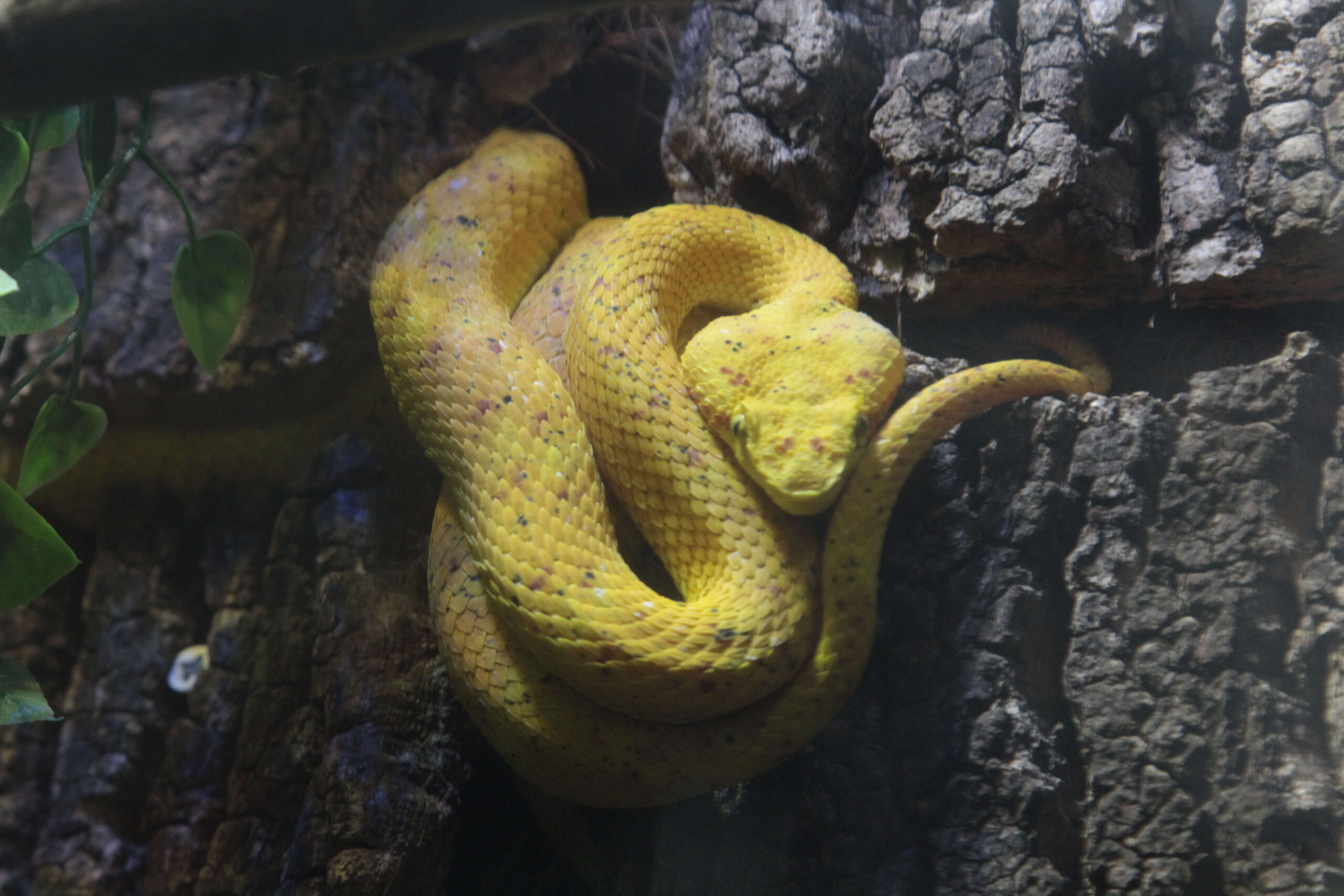
Viper Snakes (Viperidae) are a large family of nocturnal, venomous snakes. Well known for their two huge fangs, they are found almost all over the World!
Viper Snake fangs are long, sharp and hollow; allowing venom to channel through into the penetrated prey from the snake’s venom glands, situated just above the eyes. The venom is injected to kill the prey easily and to help digest it too. They swallow prey whole so the venom helps to break down the cells within the animal so it can be digested more easily.
Incredibly, viper snakes can control their venom. They can administer small quantities of venom for small prey and larger quantities to larger prey. This is important to help preserve their venom stocks, once used up they are vulnerable while their glands work hard to produce more. Viper Snakes are also known to give ‘dry bites’ where they bite but don’t inject any venom, this would typically be if they felt threatened but the threatening animal is not prey – it would be a painful warning bite but would not cause death, again preserving venom for edible prey.
Many viper snakes give birth to live young, differing them from many other snake types who generally give birth to eggs.
Most viper snakes have patterned, keeled scales, making them rough to touch and sufficiently camouflaged in their environment. They live in very different habitats, depending on their type and where in the World they live.
Type
Reptile
What do they eat?
Small mammals, birds, lizards and snakes
Size
10 – 70cm
Water Type
Warm climate
Where are we?
Most of the World
